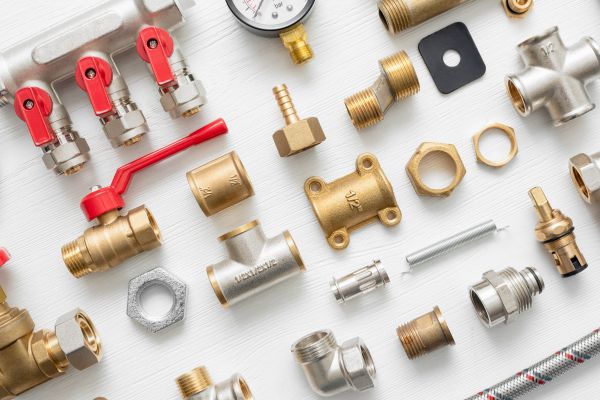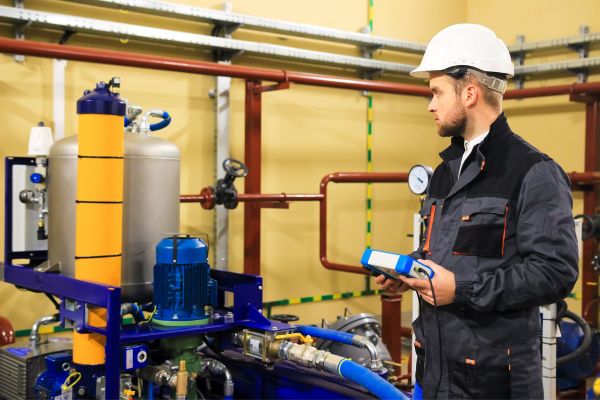When it comes to maintaining a functional and efficient home or office, plumbing is often overlooked—until something goes wrong. Whether you’re facing a leaky faucet, a clogged drain, or planning a complete bathroom renovation, having access to the right plumbing supplies can make all the difference. But where do you start? In this guide, we’ll dive into the essential aspects of plumbing supply, breaking down everything from common materials to tools, so you can tackle any project with confidence. Let’s roll up our sleeves and explore what you need to keep your plumbing in top shape!
What Are Plumbing Supplies?
Plumbing supplies encompass a wide variety of products used to install, repair, and maintain the plumbing systems in homes, offices, and commercial buildings. These systems include water supply lines, drainage pipes, and fixtures that ensure clean water flows into your home while wastewater is safely carried away.
From pipes and fittings to valves and tools, these supplies are the backbone of any plumbing system. While it may seem like a daunting task to figure out exactly what you need, don’t worry! Whether you’re a seasoned plumber or a DIY enthusiast, we’ll help you navigate the plumbing supply landscape with ease.
Essential Plumbing Supplies
When you’re diving into a plumbing project, you need to ensure you have the right supplies on hand. Here’s a quick rundown of the basics:
- Pipes:
- PVC (Polyvinyl Chloride): Lightweight, durable, and corrosion-resistant, PVC is often used for drain, waste, and vent systems.
- Copper: The gold standard in plumbing due to its durability and heat resistance, copper pipes are ideal for water supply lines.
- PEX (Cross-Linked Polyethylene): Flexible and easy to install, PEX piping is becoming more popular in residential plumbing systems.
- Fittings: These are used to connect pipes and ensure the smooth flow of water. Common fittings include:
- Elbows (for changing pipe direction)
- Tee joints (for splitting water flow)
- Couplings (for connecting pipes of the same size)
- Valves:
- Ball valves for full shutoff control.
- Gate valves for controlling water flow.
- Check valves to prevent backflow and ensure one-way flow of water.
- Plumbing Tools:
- Pipe Wrenches: A must-have for tightening or loosening pipes.
- Plumbers’ Tape: Also called Teflon tape, this helps to create a watertight seal around threaded pipe joints.
- Pipe cutters: Essential for cutting through pipes cleanly.
- Fixtures: These include sinks, faucets, showers, and toilets that connect to your plumbing system and deliver water where you need it.
Why Quality Plumbing Supply Matters
Not all plumbing supplies are created equal, and it’s essential to invest in quality materials. Using subpar products can lead to frequent leaks, corrosion, and costly repairs. Imagine fixing the same pipe over and over again because it keeps breaking! That’s a nightmare no homeowner wants to live through. Opting for durable, reliable plumbing supplies ensures long-term performance and peace of mind.
Quality supplies also make a big difference in water efficiency. Low-quality materials may contribute to wasted water, while higher-end products, such as water-saving faucets and showerheads, can help reduce water bills and conserve resources.
How to Choose the Right Plumbing Supply
With so many options available, how do you choose the right plumbing supplies for your needs? Start by considering these factors:
- Project Type: Are you working on a small fix, like replacing a faucet, or a large-scale renovation? The scope of your project will determine the type of supplies you need.
- Material Compatibility: Different plumbing systems require different materials. Make sure to choose the right pipes and fittings that match your existing system, whether it’s PVC, copper, or PEX.
- Local Building Codes: Always check your local building regulations. Some areas may have specific requirements regarding the types of plumbing materials that are acceptable.
- Durability and Longevity: Don’t cut corners! While cheaper materials might be tempting, they often don’t last as long as higher-quality supplies. It’s worth the investment to buy materials that will stand the test of time.
Top Plumbing Supply Brands
When it comes to reliable plumbing supplies, certain brands stand out from the rest. Here are some industry leaders you can count on:
- SharkBite: Known for their innovative push-to-connect fittings, SharkBite makes plumbing installations a breeze—no soldering required!
- Kohler: Specializing in high-quality fixtures, Kohler is a trusted name for sinks, faucets, and more.
- Delta Faucet: Offering a variety of sleek and functional fixtures, Delta is renowned for its water-efficient designs.
- Charlotte Pipe: A leading manufacturer of cast iron and plastic pipe fittings for residential, commercial, and industrial systems.
Plumbing Supply FAQs
1. What’s the most durable plumbing pipe material?
Copper pipes are considered one of the most durable materials due to their resistance to corrosion and high temperatures. However, PEX piping is gaining popularity because of its flexibility and ease of installation.
2. Can I use PVC for hot water lines?
No, PVC is not suitable for hot water lines as it can warp or crack under high heat. For hot water lines, consider using copper or PEX.
3. Where can I buy plumbing supplies?
Plumbing supplies can be purchased at local hardware stores, specialized plumbing supply shops, or online through retailers like Amazon or Home Depot.
4. How do I prevent leaks in pipe joints?
To prevent leaks, make sure to use plumbers’ tape around threaded joints. Additionally, double-check that all connections are securely tightened without over-tightening, which could cause damage.
5. Is it worth investing in high-end fixtures?
Absolutely! High-end fixtures often come with better warranties, advanced features (such as water-saving technology), and enhanced durability, making them a smart investment for the long run.
Conclusion
Plumbing projects don’t have to be daunting when you have the right supplies. From high-quality pipes and fittings to reliable valves and tools, the key to a successful project lies in choosing the best plumbing supplies for your needs. Remember, investing in top-notch materials saves you time, money, and headaches in the long run. So next time you’re faced with a plumbing challenge, you’ll be equipped with the knowledge and resources to tackle it like a pro!
Authoritative Links:



